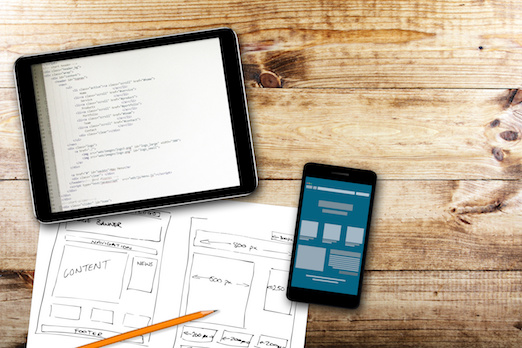When to Choose a Headless CMS (And When Not To)

Today the market is full of a variety of CMS options, and choosing one can be a daunting task. While a headless CMS can be used to cater to any kind of content requirement (especially cross-platform publishing), there are certain cases where using an API-first solution may be overkill. We’ve compiled this guide to help you determine when to choose a headless CMS and when to stick with a traditional one.
When To Consider A Traditional, Coupled CMS
Headless CMS is great for almost all scenarios, save for just a handful:
You have low or no changes to content: If you own a static website with very infrequent or no content changes, using a coupled CMS like Wordpress could be a better solution for your needs.
Your presentation is a second thought: On a site where visual presentation is not a significant focus, you could get away with using a legacy CMS.
You can’t code yourself: Since headless CMS is API-first, there aren’t many templates to leverage if you aren’t technical or are a content creator. In a case like this, using a coupled CMS is an easier way to get a head start.
You don’t have developers: If you’re a marketing-focused organization and have no developers in house or the budget for an external development agency, it’s better to have a drag and drop user interface where you can build your presentation layer without knowing how to code.
You’re a small business: If you’re a small operation, then a free or low-cost self-service CMS platform is best (think Wix or Squarespace) because like the above scenarios, you probably don’t have the resources to completely customize your site. But it’s important to remember that eventually, you’ll hit a plateau on these CMS platforms – especially once your business grows to the point where you need flexibility to have centralized content for more than just your web presence. Remember, headless is best for SMBs and enterprise organizations looking to empower their marketing team to generate content cross-platform in a central location. Plus, developers love the freedom and flexibility they get when they can code in their preferred language.
When To Consider A Headless Or Decoupled CMS
There are several cases where having a headless CMS on your side can prove to be an advantage for your business. Here are a few use cases:
You need to produce dynamic content: If your digital property requires frequent content updates, going with a headless CMS is the best choice. It lets you create, update, and manage content often and easily, without affecting the presentation code.
You need a centralized location for content. In a headless CMS, you can easily update just a string of text and launch the change across a jumbotron, website, smartwatch and VR headset all at once without worrying about the presentation layer. This is critical especially for things like flash sales or other content that needs to get out quickly.
You’re not just focused on the web. If you need to reach your audience across multiple channels like mobile, smartwatches or a marketing kiosk, an older solution isn’t going to cut it. Unlike traditional CMS’s that come with only web page layouts by default, a headless CMS has no presentation layer attached to it. It delivers content via APIs, which means you can send your content to any medium or channel. This is highly beneficial since people consume content across different channels and especially helpful for well-established organizations that have budget for ads.
You prioritize high-speed content delivery. Thanks to content delivery networks (CDNs), many headless CMS providers enable delivering content to any corner of the world in a fraction of a second. This isn’t possible with legacy content management systems that don’t expose their APIs. As a result, headless CMS is best suited for businesses that rely on high-speed content delivery.
You need to scale quickly. As with any SaaS service, a headless CMS is lightweight since you don’t have to maintain a backend or bare the cost of any of the infrastructure. Instead, you can focus on publishing as much content as you need, quickly and easily.
You have dedicated developers. Since headless CMS is API-first, you’ll need developers to create the presentation layer and set up the content. If your organization has a dedicated team to help develop your presentation layers, you’re ready for headless.
About Contentstack
The Contentstack team comprises highly skilled professionals specializing in product marketing, customer acquisition and retention, and digital marketing strategy. With extensive experience holding senior positions at renowned technology companies across Fortune 500, mid-size, and start-up sectors, our team offers impactful solutions based on diverse backgrounds and extensive industry knowledge.
Contentstack is on a mission to deliver the world’s best digital experiences through a fusion of cutting-edge content management, customer data, personalization, and AI technology. Iconic brands, such as AirFrance KLM, ASICS, Burberry, Mattel, Mitsubishi, and Walmart, depend on the platform to rise above the noise in today's crowded digital markets and gain their competitive edge.
In January 2025, Contentstack proudly secured its first-ever position as a Visionary in the 2025 Gartner® Magic Quadrant™ for Digital Experience Platforms (DXP). Further solidifying its prominent standing, Contentstack was recognized as a Leader in the Forrester Research, Inc. March 2025 report, “The Forrester Wave™: Content Management Systems (CMS), Q1 2025.” Contentstack was the only pure headless provider named as a Leader in the report, which evaluated 13 top CMS providers on 19 criteria for current offering and strategy.
Follow Contentstack on LinkedIn.






.svg?format=pjpg&auto=webp)
.svg?format=pjpg&auto=webp)
.png?format=pjpg&auto=webp)






.png?format=pjpg&auto=webp)


